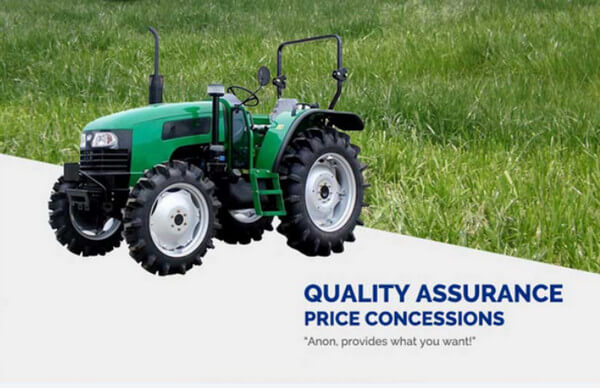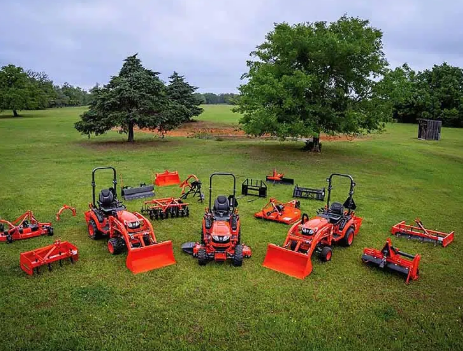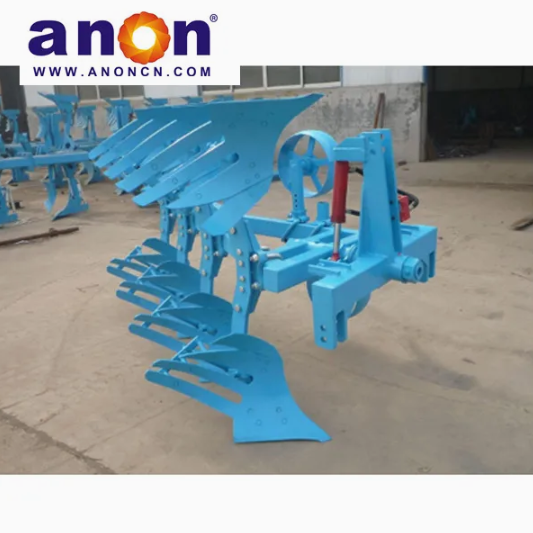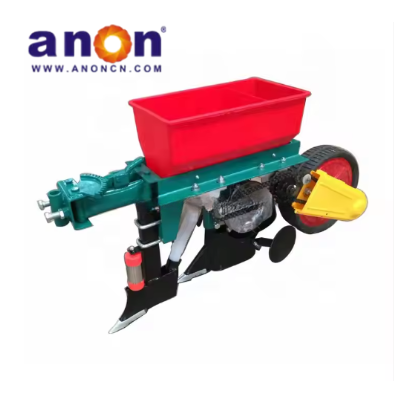Introduction
The agricultural sprayer is an indispensable tool in modern agriculture, which plays a key role in ensuring the healthy growth of crops and improving agricultural production efficiency. This article will give you a comprehensive introduction to the agricultural spray from the aspects of definition, type, application, and selection, as well as safety maintenance.
What is a sprayer?
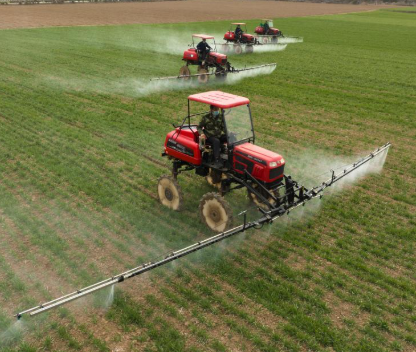
An agricultural sprayer is a machine used to evenly apply liquids like pesticides, fertilizers, and plant growth regulators to crops, soil, or specific areas. It atomizes the liquid and sprays it evenly onto crops, soil, or plant leaves. This helps prevent pests and diseases, promotes plant growth, and improves crop yield and quality.、
Types of Sprayer
There are many kinds of sprayers, which can be roughly classified according to power and operation method.
According to the Power
Manual Sprayers
Manual sprayers are manually operated. They offer low cost and flexibility, but limited efficiency. They are suitable for small-scale operations such as vegetable gardens, home gardening, and pest control.
Electric Sprayers
Electric sprayers are powered by batteries or motors and are easy to operate. They are suitable for small to medium-sized farms, orchards, greenhouses, and other fields.
Fuel Sprayers
Fuel sprayers are generally powered by gasoline or diesel, offering high power and suitable for large-scale operations.
According to the Operation Method
Handheld sprayer
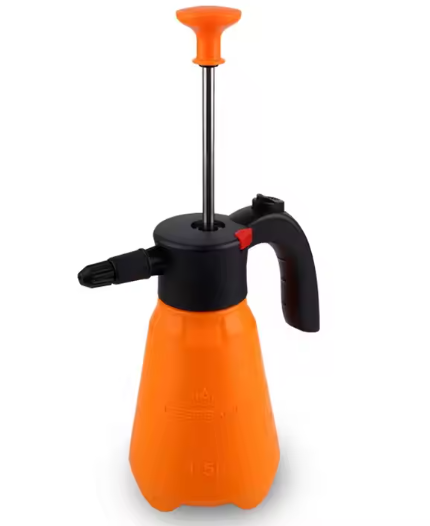
The hand-held spray is a kind of convenient small equipment, small in size and light in weight, which can be operated by one hand and can be started by pressing or electro-pneumatic. It is suitable for small area operations, such as gardening, greenhouses, etc.
Knapsack sprayer
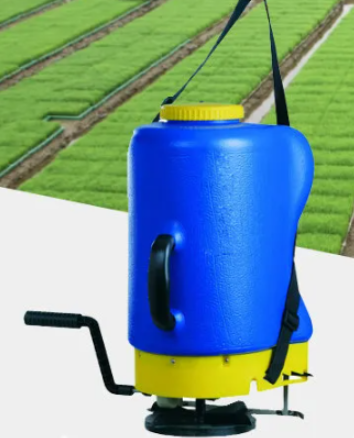
The knapsack spray is composed of a liquid medicine weldment, pump, air chamber, water outlet pipe, handle switch, spray rod, spray head, rocker components, and strap system. When in use, you need to shake the joystick component to make the leather bowl open and close in the cylinder and chamber, gradually increasing the pressure inside the chamber (up to 0.6Mpa). The medicine at the bottom of the medicine tank passes through the outlet pipe and then through the spray rod, and finally, it sprays mist from the nozzle. The operator carries the medicine box of the backpack spray machine on their back, as it is designed to imitate the curve of the human body. The machine allows for flexible operation and can spray continuously or in spots. Widely used in orchards, gardens, greenhouses, etc., suitable for medium-sized operations.
Stretcher sprayer

The stretcher-type sprayer is a motorized device mounted on a frame, with the medicine tank carried by two people during operation. It consists of five main parts: the frame, engine (gasoline, diesel, or electric), liquid pump, suction component, and spray system. The engine drives a hydraulic pump, which pressurizes water, mixes it with pesticides, and sprays it through a gun or nozzle. The spray gun is used for long-distance spraying, while the spray bar is for large, even coverage. This sprayer is ideal for orchards, uneven terrain, and areas with dense plants.
Trolley sprayer
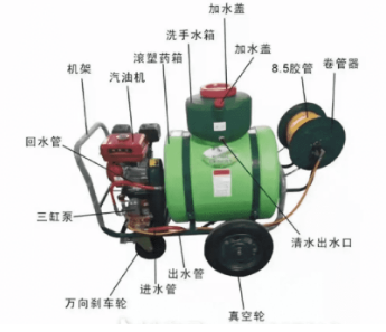
A trolley spray is a kind of spray device that installs spray equipment on a trolley with wheels. The medicine box is installed on the trolley, making operation effortless. During operation, the engine drives the plunger pump through a belt to generate high-pressure liquid. The pump pushes the liquid through the infusion tube to the spray rod, where the nozzle turns it into small droplets and sprays them evenly over the target area. The trolley holds the chemical tank, which reduces manual labor and makes it suitable for large-scale operations, helping you work more efficiently. People widely use cart-type sprayers in agriculture, horticulture, urban greening, greenhouses, and other settings for large-area spraying tasks.
Self-propelled sprayer
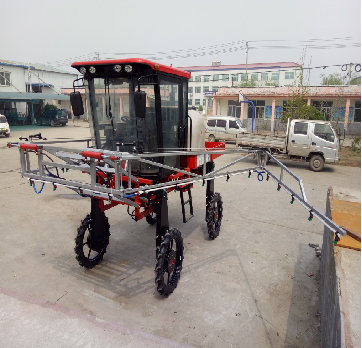
The self-propelled spray is a kind of plant protection machinery with independent walking ability, usually equipped with a power system, spray system, walking system, and control system. Its core feature is to achieve the balance and stability of the spray bar through the mechanical or hydraulic system to ensure the uniformity of the spray.
Equipped with a power system, it can walk autonomously and is suitable for large-scale operations.
Trailed sprayer
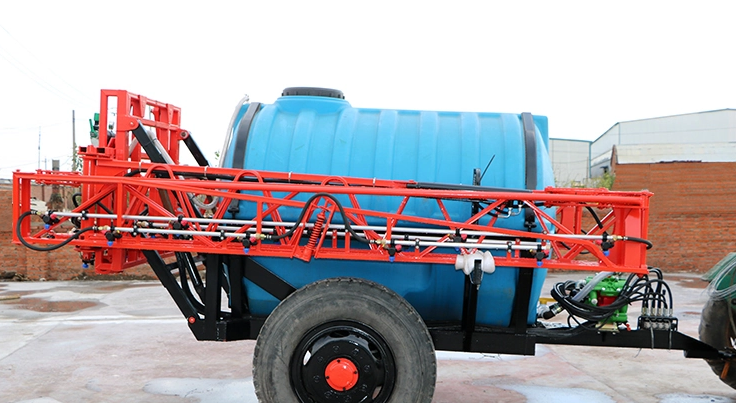
The tractor-mounted sprayer is a wheeled pest control machine powered by a tractor. It has a large tank capacity, allowing for longer spraying times. Equipped with an advanced spraying system, it precisely controls the amount and direction of pesticide applied. Tractor-mounted sprayers are widely used in agriculture, forestry, and other fields. They are efficient, flexible, and highly adaptable.
Mounted sprayer
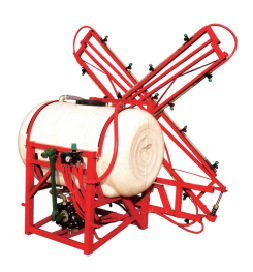
The mounted spray is a spray that is suspended at the rear of the tractor and driven by the tractor’s power output. Its homework efficiency is high, saving time and effort. You only need to drive a tractor to complete the spraying operation, which is suitable for large-scale spraying of various liquid formulations such as pesticides, fertilizers, and plant growth regulators.
Drone sprayer
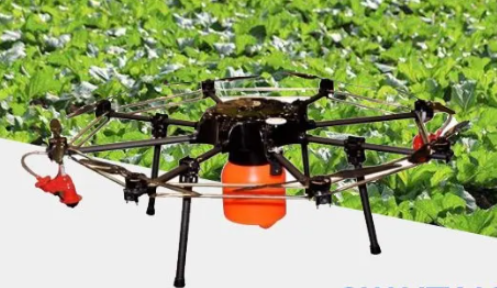
The drone sprayer is an important technological innovation in modern agricultural pest control, used for spraying pesticides, fertilizers, and other liquid formulations. It features a spraying system and smart control technology for efficient, precise, and safe pesticide application.
First, the drone sprayer uses a human-machine separation method, preventing operators from close contact with pesticides and improving safety. The fine mist droplets reduce pesticide drift and waste. The smart control system allows the drone to automatically plan its flight path, fly autonomously, avoid obstacles, and operate without terrain limitations. It is suitable for pest and disease control on various crops and fruit trees.
Air sprayer
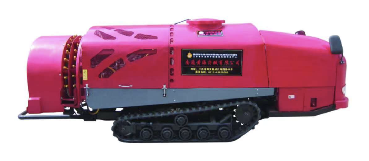
The air spray is a device that atomizes the liquid into micron-sized particles under high pressure and uses the air flow generated by the fan to disperse the fog and throw it into the target area. The pneumatic spray is mainly applicable to orchards, such as plant protection operations in vineyards, pesticide spraying, foliar fertilizer, etc. It does not rely solely on the pressure of the liquid pump to atomize the medicine, but relies on the strong airflow generated by the fan to blow the droplets to various parts of the fruit tree. The high-speed airflow of the fan helps the droplets penetrate the dense branches and leaves of the fruit tree, causing the leaves to flip and increasing the adhesion rate of the medicine without damaging the branches or fruits of the fruit tree. It has the advantages of good spray quality, less water consumption, and high production efficiency.
Electrostatic sprayer
An electrostatic sprayer is a new type of spray equipment for plant protection that uses electrostatic charges. During spray, the particles of the drug solution are charged through electrostatic generation devices. The principle of electrostatic adsorption is used to make the droplets evenly adsorbed on the positive and negative sides of the operating leaves, improving the attachment efficiency of the pharmaceutical industry on the surface of crops. It can help you save water and drugs, improve agricultural utilization, and control effects.
Typical Uses for Agricultural Sprayers
Spray has many uses in agriculture, mainly for spraying liquid, so it can be used to spray pesticides, herbicides, fertilizers, and water.
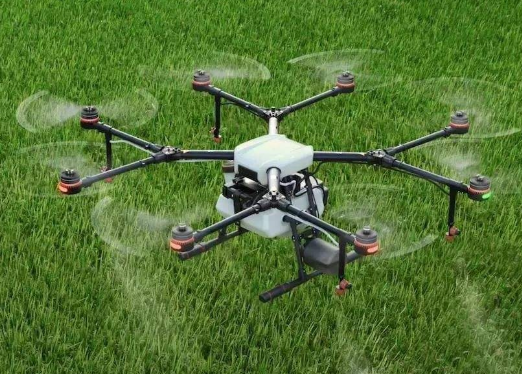
Spraying pesticides
First, the agricultural sprayer is the main tool for controlling pests and diseases in agriculture. After mixing pesticides with water, the sprayer evenly applies the mixture as a mist to affected crop areas. This helps you effectively eliminate and control the spread of pests and diseases. For large-scale crops like soybeans, wheat, corn, and cotton, the sprayer quickly covers large areas of farmland, improving efficiency, reducing pesticide use, and minimizing environmental impact.
Spraying herbicides
You need to first mix the herbicide with water, spray it in the form of a fine mist through a spray, forming a film on the soil surface or directly acting on the stems and leaves of weeds to prevent the growth of fungi or harmful plants and wither the weeds, thus achieving the effect of weeding. During use, you need to ensure even spraying and avoid missed or repeated spraying to ensure weed control effectiveness.
Applying liquid fertilizers
Liquid fertilizer is sprayed onto crop leaves or the soil around the roots in the form of a fine mist or droplets using a sprayer. Crops absorb the nutrients through their leaves or the soil. In actual use, you need to make sure the spray is even and fully covers the area. This helps avoid nutrient waste or high local concentrations that can burn the plants.
Spraying water
One of the most common uses of a spray is to spray water on plants and crops. Spraying water has two functions. One is to replenish water for crops, especially during the dry season, which can quickly replenish water and promote their healthy growth. In hot weather, it can also cool the leaves and reduce transpiration. Another approach is to perform foliar cleaning to remove dust and insect eggs and enhance photosynthesis.
How to choose the right agricultural sprayer for you?
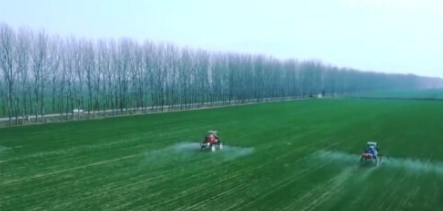
Consider the farmland area
Firstly, you need to consider the size of your farm. The required tank capacity of the sprayer depends on the spraying area. For small farms, from a few to a few dozen acres, you can use a manual sprayer. For slightly larger areas, a backpack or stretcher sprayer is a good choice. They are low-cost and suitable for light work.
For medium-sized farms, a tractor-mounted sprayer works well. It helps you improve efficiency and reduce labor costs.
For large farms with hundreds of acres, you can use self-propelled sprayers or drone sprayers. These allow for automated spraying and save both labor and time.
Know the type of crop
Secondly, different grains have different requirements for spray methods. For example, for rice, wheat, and other low-stem intensive crops, they need a spray to atomize well. The nozzle is close to the crop and can penetrate the leaves below to reduce waste, so you can choose an electrostatic sprayer. For high-stem crops such as corn, you need to use a high-boom sprayer. It helps the spray reach through the crop canopy and ensures even coverage. For some special crops, such as vineyards, it is better to use an air spray, which uses air flow to send the liquid medicine to the back of the leaves to improve the control effect.
Maintenance and Security
Regularly check and clean
Firstly, you need to regularly inspect the nozzle and spray bar to check if the nozzle is blocked and if the spray bar is bent or damaged. When the atomization effect of the nozzle is poor, it is necessary to replace or adjust the nozzle angle. Immediately rinse the medicine box, nozzle, and pipeline with clean water after homework to prevent residual medicine from corroding the equipment. Replace vulnerable parts, such as sealing rings and filters in a timely manner to prevent leakage. Finally, before long-term storage, make sure to clean the sprayer thoroughly. Apply anti-rust oil to all metal parts to prevent rusting.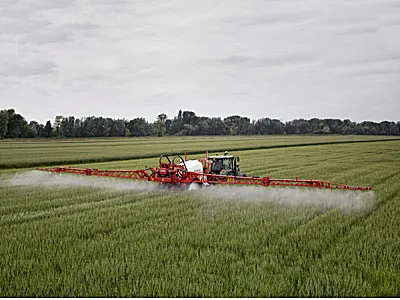
Safety regulations
During the operation of the sprayer, first pay attention to safety and avoid contact of the liquid with the skin and respiratory tract. Before starting, check whether the nozzle, pump body, and pipeline are intact and ensure the pressure gauge is working normally. Additionally, avoid working in environments with strong winds or high temperatures to prevent evaporation or drift of the liquid.
If the liquid leaks during operation, stop working immediately and rinse the leaked area with clean water to prevent pollution of soil and water sources. Moreover, if the liquid touches your skin or eyes, wash the area with plenty of clean water right away and seek medical help as soon as possible.
Conclusion
I believe that after reading this article, you have a deep understanding of the spray. ANON provides various agricultural machinery to global customers, committed to providing each customer with cost-effective and easy-to-use machines. If you have any needs, please feel free to contact us anytime!
FAQ
How long after spraying pesticides is it safe for humans?
If possible, they should stay inside or avoid the area for about 30 minutes after spraying. If pesticides are applied inside the home, windows should be opened to allow air flow. People should avoid touching sprayed areas and leave the room until the pesticide has dried.
Can I sleep in my room after spraying insecticide?
The standard practice is to wait two to four hours post-treatment before re-entering your home. This precaution minimizes health risks from chemical exposure.
What is the difference between a sprayer and a duster?
How to Secure Plants with Sprayers and Dusters: Uses & Features -Sprayers are used to manage pests by using natural materials such as contaminations and small creatures in sprayers. A duster insecticide is a helpful tool for getting pesticides deep into cracks, crannies, and other similar spaces to kill crawling and flying insects, such as scorpions, bees, and other pests.


